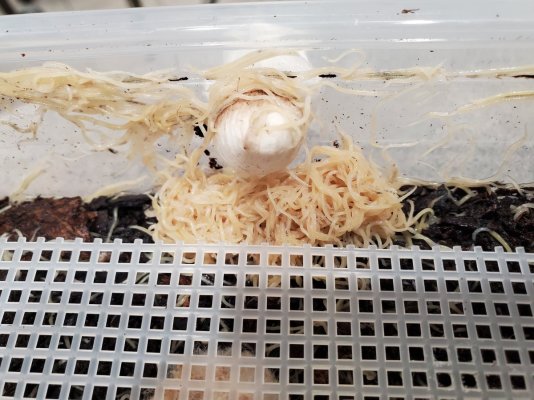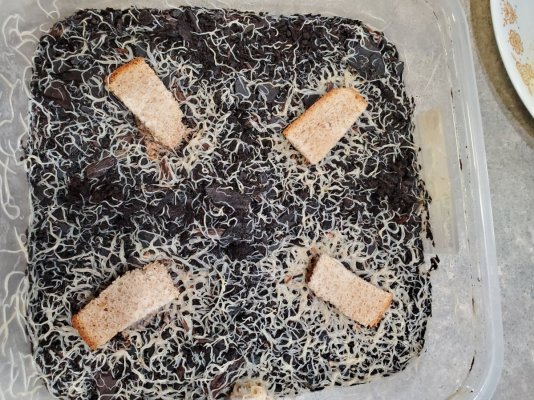WHAT LIVE FOOD DO YOU FEED YOUR REEF?

There are a number of reasons to feed live food, and a number of different live foods available. What do you use and why? What are the Pros & are there any Cons? Let’s dig deeper.
Some tanks will provide live foods from hitchhikers that come “naturally” to our tanks, like bristle worms etc. But what do we use intentionally? And is it nutritious?
My favorite LFS likes to compare brine shrimp to potato chips. “Oh the fish will love it but they have no nutritional value.” The first part is true, the second true to a point. Brine shrimp do provide nutrition just not a lot. Baby Brine Shrimp (BBS) are packed with proteins, unsaturated fatty acids, and lipids. They are considered by many to be the best nutritional offering for larval fish, and are great for invertebrates and other life in our reefs. The down size is they lose 36-55% of their caloric value between 24-48 hours after hatching which is ok if you hatch and feed immediately, but makes it an issue if you are wanting to purchase BBS. At www.reefbysteele.com we have found a solution. We decapsulate brine shrimp eggs (separate the shell from the cyst) and then add these preserved egg sacs to phytoplankton enriched saltwater on the day of shipping. It takes 24-36 hours for them to hatch so they arrive freshly hatched and ready to feed with 2 day shipping.
How about adult brine shrimp? If as stated they are like a potato chip, why would we want to feed them? For many reef keepers, the answer is to feed specific animals. Sea horses are a great example of an animal that would greatly benefit from live brine, or that specialty (expert only) fish that we have to have, but have troubles getting them to eat prepared foods. Down side is the low nutritional value. This can be overcome just as frozen spirulina enriched brine shrimp is a better alternative to straight frozen brine. Hatcheries enrich their brine with SuperSelco and or phytoplankton. Here at www.reefbysteele.com we offer live brine shrimp raised in a phyto enriched environment and shipped in a high concentration of phyto with Selcon added. This allows you to refrigerate and feed live brine shrimp already gut loaded for optimum nutrition, and we have done all the work.
Rotifer play an important role in rearing fish fry. Some consider them to be a must for successfully raising clown fish and others. But is there any benefit to feeding live foods in our reefs? Although many will say that corals only need proper light and then the zooxanthellae will convert nutrients to provide everything the corals need, there are many examples of reefers experiencing greater growth and extension when they add rotifers to their reefs. Our densely populated rotifer cultures shipping in phytoplankton enriched saltwater make an excellent addition to any order.
Copepods are another excellent food source and a must have for certain inhabitants of our reefs. I am not aware of any down sides to adding copepods to your reef but there are a multitude of positive benefits. One is that they can and will reproduce in your reef with proper care. Tanks with several pod hunting species may require more regular additions to maintain colonies, but their contribution is well worth it.
Phytoplankton is an excellent source of HUFA (Highly Unsaturated Fatty Acids) and play an important role in maintaining copepod populations as well as feeding filter feeders and enhancing many types of corals.
Feeder fish and shrimp. There are definitely up and down sides to these. Source is one issue. Where did they come from and are they carrying any pathogens we do not want in our tanks. Another issue that I have seen mentioned is freshwater feeder fish may not provide all of the nutritional value needed for our marine animals. I use live feeder shrimp to help get new arrivals eating such as our marine beta, blue box fish and others. Often difficult to get some species eating prepared foods, but by feeding live shrimp or fish and weaning the new arrival over to prepared foods, you can often achieve success.
What input, thoughts and opinions can you add to this discussion?
There are a number of reasons to feed live food, and a number of different live foods available. What do you use and why? What are the Pros & are there any Cons? Let’s dig deeper.
Some tanks will provide live foods from hitchhikers that come “naturally” to our tanks, like bristle worms etc. But what do we use intentionally? And is it nutritious?
My favorite LFS likes to compare brine shrimp to potato chips. “Oh the fish will love it but they have no nutritional value.” The first part is true, the second true to a point. Brine shrimp do provide nutrition just not a lot. Baby Brine Shrimp (BBS) are packed with proteins, unsaturated fatty acids, and lipids. They are considered by many to be the best nutritional offering for larval fish, and are great for invertebrates and other life in our reefs. The down size is they lose 36-55% of their caloric value between 24-48 hours after hatching which is ok if you hatch and feed immediately, but makes it an issue if you are wanting to purchase BBS. At www.reefbysteele.com we have found a solution. We decapsulate brine shrimp eggs (separate the shell from the cyst) and then add these preserved egg sacs to phytoplankton enriched saltwater on the day of shipping. It takes 24-36 hours for them to hatch so they arrive freshly hatched and ready to feed with 2 day shipping.
How about adult brine shrimp? If as stated they are like a potato chip, why would we want to feed them? For many reef keepers, the answer is to feed specific animals. Sea horses are a great example of an animal that would greatly benefit from live brine, or that specialty (expert only) fish that we have to have, but have troubles getting them to eat prepared foods. Down side is the low nutritional value. This can be overcome just as frozen spirulina enriched brine shrimp is a better alternative to straight frozen brine. Hatcheries enrich their brine with SuperSelco and or phytoplankton. Here at www.reefbysteele.com we offer live brine shrimp raised in a phyto enriched environment and shipped in a high concentration of phyto with Selcon added. This allows you to refrigerate and feed live brine shrimp already gut loaded for optimum nutrition, and we have done all the work.
Rotifer play an important role in rearing fish fry. Some consider them to be a must for successfully raising clown fish and others. But is there any benefit to feeding live foods in our reefs? Although many will say that corals only need proper light and then the zooxanthellae will convert nutrients to provide everything the corals need, there are many examples of reefers experiencing greater growth and extension when they add rotifers to their reefs. Our densely populated rotifer cultures shipping in phytoplankton enriched saltwater make an excellent addition to any order.
Copepods are another excellent food source and a must have for certain inhabitants of our reefs. I am not aware of any down sides to adding copepods to your reef but there are a multitude of positive benefits. One is that they can and will reproduce in your reef with proper care. Tanks with several pod hunting species may require more regular additions to maintain colonies, but their contribution is well worth it.
Phytoplankton is an excellent source of HUFA (Highly Unsaturated Fatty Acids) and play an important role in maintaining copepod populations as well as feeding filter feeders and enhancing many types of corals.
Feeder fish and shrimp. There are definitely up and down sides to these. Source is one issue. Where did they come from and are they carrying any pathogens we do not want in our tanks. Another issue that I have seen mentioned is freshwater feeder fish may not provide all of the nutritional value needed for our marine animals. I use live feeder shrimp to help get new arrivals eating such as our marine beta, blue box fish and others. Often difficult to get some species eating prepared foods, but by feeding live shrimp or fish and weaning the new arrival over to prepared foods, you can often achieve success.
What input, thoughts and opinions can you add to this discussion?


















